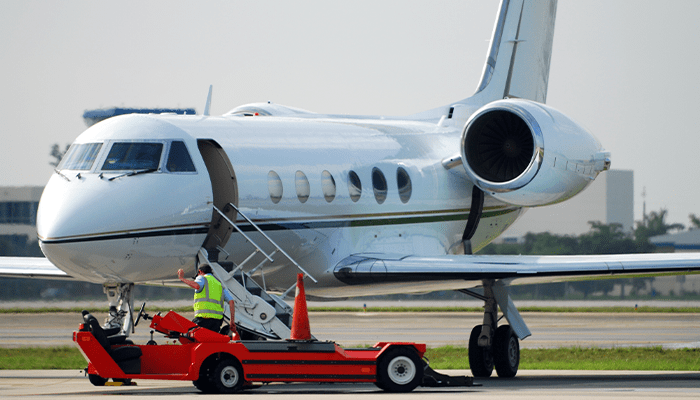
The Consequences of Over or Under-Insuring Your Aircraft
Aircraft insurance is unique. While auto insurance is written on an actual cash value basis, aircraft coverage is written on a stated or agreed value basis. You and the insurance company agree at the beginning of the policy term to the value of your aircraft. In the event of a total loss (insurer has the option to declare a damaged aircraft a constructive total loss), the insurance company is obligated to pay the agreed or stated value shown on the policy.
Many aircraft owners purchase an aircraft, insure it the first year for the amount they paid for it, and then make the crucial mistake of leaving the value the same at each policy anniversary. At each policy renewal, adjust the insured value of the aircraft to the current market value.
What is the current market value?
Simply put, if you were to offer your aircraft for sale at that moment, what would a reasonable buyer pay for it? You can get a good idea of the current market value by consulting your aviation insurance broker who will give you the most recent bluebook value. Your best source, however, is an aircraft salesperson who specializes in selling your type aircraft. Keep in mind if you have an outstanding loan on the aircraft, you would have to insure it for the current market value or outstanding loan amount – whichever is greater.
Perils of Over or Under Insuring
The best way to explain why over- or under-insuring an aircraft is a bad idea is by example:
Your aircraft, which you purchased four years ago for $1M, has a current market value of $700K, but you’ve never changed the insured value. A storm collapses the hangar on your aircraft causing significant damage. The repair estimate is $300K. The insurance company solicits and receives a salvage bid of $400K for the aircraft as-is. The insurance company has two options:
1. Declare the aircraft a constructive total loss, pay you the agreed value ($1M), then sell the salvage ($400K), putting their net loss at $600K.
2. Repair the aircraft for $300K (even though you may not want it back). Their net loss is $300K.
You can likely guess which option the insurance company will choose. They will be forced to repair it. Now substitute the proper insured value of $700K and run the numbers again. Since the amount they will pay is the same, they will normally let it be your choice whether to total or repair.
The usual result of over-insurance is the insurer is forced to repair the aircraft in almost all instances except when the aircraft is totally destroyed, which is an uncommon event. Keep in mind that over-insuring also results in a higher hull premium.
Conversely, under-insuring an aircraft has the reverse effect. To illustrate, substitute an insured value in the example above that is significantly lower than the market value. The insurance company will pay a total loss and take title to the aircraft, rather than incur the higher cost of repairing the aircraft. Keep in mind that you can inadvertently create an under-insurance situation if you add a new avionics package, new or overhauled engines, or any addition of significant value to your aircraft and fail to increase the insured value of the aircraft once the upgrade is complete.
For help with understanding the proper insured value of your aircraft, contact the AssuredPartners Aerospace insurance specialists.
Featured News & Insights

Insurance is a crucial part of financial planning, providing peace of mind and protection against unforeseen events. However, not all insurance brokers operate with integrity. Some brokers exploit...

The Broker of Record (BOR) letter is one of the most powerful and abused documents in the insurance industry. Unfortunately, many less-than-scrupulous brokers convince insurance buyers to sign this...

When most folks think of Personal Injury liability, they think of late-night commercials or unending billboards advertising personal injury attorneys who want to represent them when they have been...